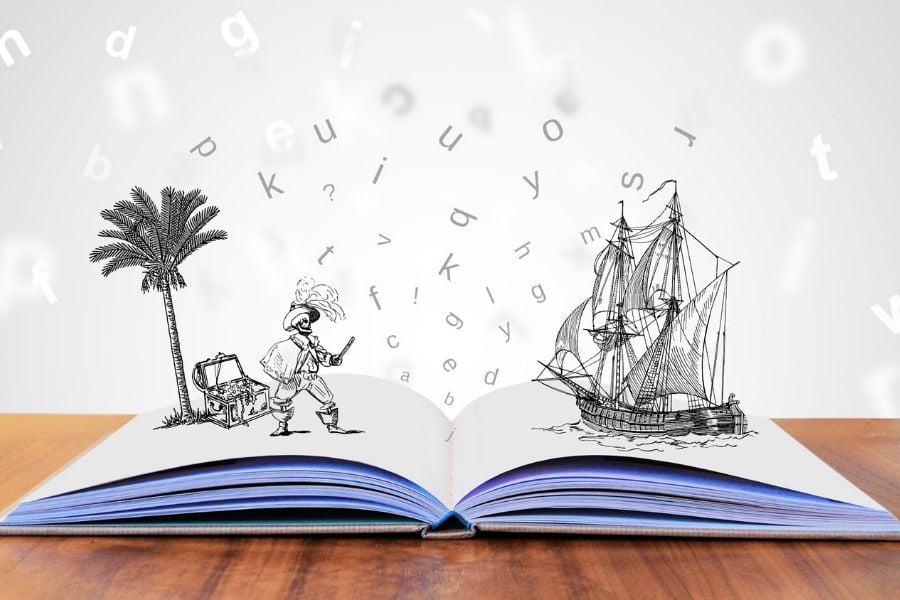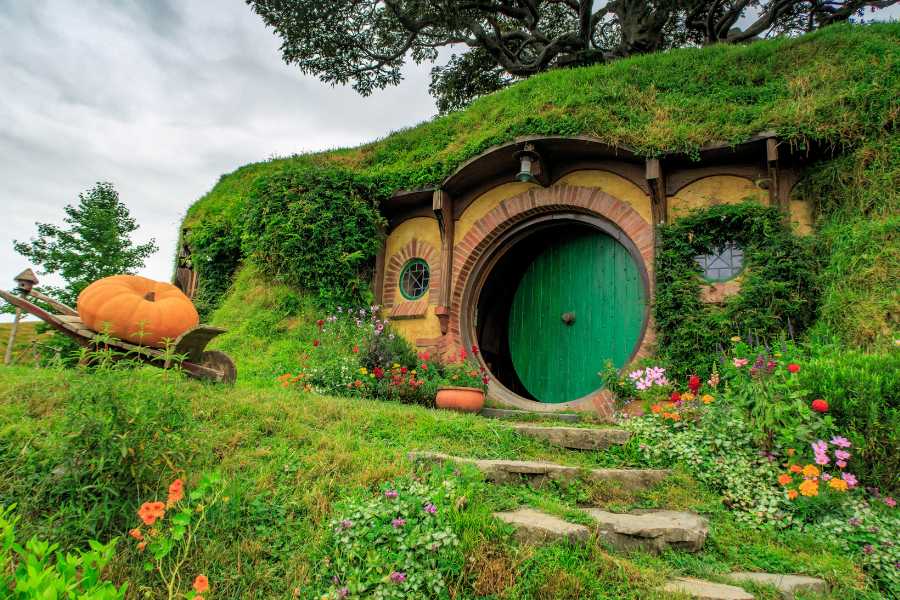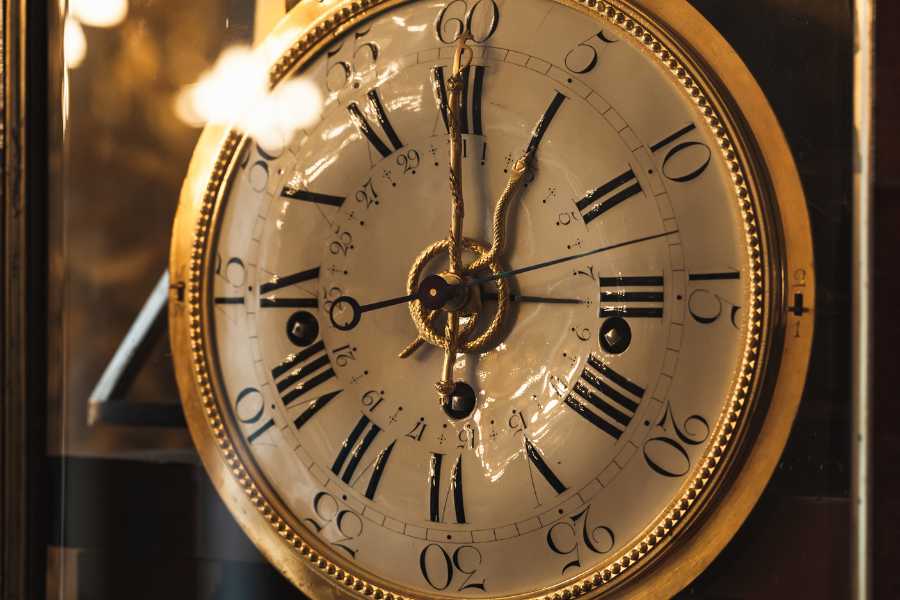Love the magic of a beautifully told tale?
Want to master the art of creating such enchantment yourself?
You’ve landed at the right place.
Our exploration into creative writing will uncover not one, not two, but ten powerful secrets to crafting spellbinding stories that readers can’t resist.
From character arcs that tug at heartstrings to plots that keep readers at the edge of their seats, we’ve got all the insider tips you need, along with some stellar literary examples from the most creative writers in the industry.
Ready to stir the cauldron of creativity and brew some enchanting narratives?
Let’s dive right in.

1. The Power of the Unexpected: Flip Your Characters
Shaking up your character roles is like adding an unexpected ingredient to a recipe, creating a surprising and delightful flavor.
Say you have a crime-fighting superhero.
Now imagine this superhero as the villain, secretly causing the chaos they’re supposedly trying to stop.
Suddenly, your narrative gains a new dimension of intrigue and complexity.
Let’s take an example from literature: Gregory Maguire’s Wicked: The Life and Times of the Wicked Witch of the West.
This novel beautifully flips the well-known tale of The Wizard of Oz.
The villainous Wicked Witch of the West is now the protagonist, exploring her backstory and casting her in a sympathetic light.
Such a plot flip captivates readers by breaking away from expectations and presenting a fresh perspective.
When you leverage a tactic like this, you stretch your creative writing muscles by challenging conventional character roles. Plus, it hooks your readers with a unique, unpredictable narrative, making your story hard to forget.
2. Time Travel: Fast-Forward Your Plot
Stepping on the accelerator and pushing your plot into the future can be a game-changer.
Instead of sequentially building up to the climax, you reveal the climax or its aftermath and then unravel the plot backward.
Consider Audrey Niffenegger’s The Time Traveler’s Wife. The book uses time jumps to weave a complex, non-linear narrative.
The readers learn early on about the time-traveling condition of the protagonist, and the story is a back-and-forth journey through time, making the narrative tantalizingly unpredictable.
The benefits of this approach are twofold.
First, you’re challenging yourself to weave a story that’s non-linear, improving your narrative crafting skills.
Second, it generates curiosity and suspense for the readers as they strive to connect the dots, making your narrative a page-turner.
3. A Whole New World: Go Non-Traditional with Your Setting
Keep in mind that a setting is not just a backdrop of a story but a character in its own right.
It shapes the story’s mood, influences the characters’ behavior, and engages readers with its uniqueness.
So, instead of the cliche settings, why not set your story in a magical forest with glowing flora? Or a city floating among the clouds?
J.K. Rowling’s Harry Potter series does this brilliantly. Hogwarts, Diagon Alley, the Forbidden Forest — each location is strikingly unique and has a significant role in the story’s progression.
The detailed description and novelty of these settings captivate readers, immersing them in the wizarding world.
Moreover, an unconventional setting provides a fresh visual appeal for your readers and enhances your creative writing.
Crafting such detailed and outlandish settings stretches your imagination, thereby improving your ability to create vivid, engaging narratives for your readers.
4. Breaking the Language Barrier: Invent a Dialect

Tinkering with language is a fascinating venture in the realm of creative writing.
Imagine your characters speaking in a tongue that’s uniquely theirs.
You could use existing languages as a base and sprinkle it with made-up words or phrases. Or, go all out and design a new language from scratch, complete with its grammar rules!
J.R.R. Tolkien’s The Lord of the Rings series provides a prime example.
Tolkien meticulously created languages like Elvish and Dwarvish, enriching his world-building and immersing readers more deeply in the story.
Sure, it’s a daunting task, but with some linguistic creativity, you could concoct a distinctive dialect that adds a whole new layer of depth to your narrative.
The payoff?
Not only does it give your characters a distinct voice, but it also improves your linguistic abilities and understanding of language nuances, honing your creative writing skills.
Plus, it guarantees a memorable reading experience for your audience.
And if it’s memorable enough, some die-hard fans of your work may even try to learn the language for themselves.
5. Breaking the Mould: Incorporate Graphic Novel Elements
Blend the beauty of visuals with the power of words by incorporating elements of graphic novels into your creative writing.
You don’t have to be a professional artist. Just sketch rudimentary characters or storyboard a few scenes. Use typography to illustrate a character’s emotional state.
The possibilities are endless!
Scott McCloud’s Understanding Comics: The Invisible Art blends prose with comic art to deliver a compelling narrative about the art of comics.
Incorporating such visual elements lends your narrative a multidimensional aspect, creating a reading experience that’s both visually and intellectually stimulating.
What’s the gain?
Incorporating visuals stretches your creativity beyond the confines of words, adding a fresh dynamic to your storytelling.
Plus, it enhances reader engagement by providing visual context and creating a more immersive reading experience.
6. Rhyming it Out: Blend Poetry into Prose
Incorporating poetry into your prose isn’t about making every line rhyme.
It’s about bringing a rhythmic flow to your narrative, perhaps through a character who speaks in verse or including poetic descriptions of your settings or events.
A notable example is David Mitchell’s Cloud Atlas.
This novel has a section presented in an interview format where the character uses rhymes and verses to express thoughts, infusing the narrative with a lyrical quality.
Blending poetry and prose makes your narrative rhythmically pleasing, adding an element of musicality to your storytelling.
It can also convey a character’s unique voice or showcase a scene in a more vivid and emotionally impactful way.
This not only refines your creative writing skills but also provides your readers with a rich, textured narrative.
7. Perspective Shifts: Tell the Story from an Inanimate Object’s Viewpoint

Shifting perspective to an inanimate object adds an entirely new flavor to your narrative.
Pick an object – a grandfather clock in the hallway, an antique mirror, or a vintage car — and tell your story through its lens.
It’s not just about the object recounting events. It’s about imagining how an object would perceive the world and the events around it.
Of course, you don’t have to stop at objects. You can also approach stories from the perspective of a concept.
Take Markus Zusak’s The Book Thief, for example.
The story is narrated by Death, an unconventional narrator who offers a poignant and unique view of the events. Similarly, using an inanimate object as your narrator makes your narrative distinct, innovative, and incredibly engaging.
The advantage of this brilliant exercise is that it enables you to broaden your narrative skills, challenging you to step outside the human perspective.
Plus, this unique viewpoint offers your readers a refreshing narrative, ensuring your story stands out in their memory.
8. Mixing it Up: The Impact of Genre Fusion
Mixing genres isn’t about confusing your readers with a haphazard blend of themes. It’s about seamlessly weaving elements of different genres into your story.
Imagine a fantasy tale set in a sci-fi universe or a romance brewing in a thriller plot. The key is to make the blend seamless and meaningful, not forced.
Take The Dark Tower series by Stephen King, which masterfully blends fantasy, horror, and Western genres.
The mix gives the narrative a distinct flavor, making it an unforgettable reading experience.
A bold approach to genre fusion allows you to break free from the constraints of a single genre, thereby expanding your creative scope.
It challenges your creative writing skills and offers your readers a narrative that’s unpredictable, fresh, and thoroughly engaging.
It also has the potential to attract a wider audience to the world of your story.
9. Changing Up the Structure: Try Mosaic or Non-linear Plot

A linear plot is not the only way to weave a narrative.
Experiment with mosaic or non-linear plot structures that present the story as a collection of interconnected pieces rather than a straight-line narrative.
It’s like putting together a jigsaw puzzle, each piece revealing a part of the story but not necessarily in chronological order.
One example is Pulp Fiction by Quentin Tarantino.
Yes, it’s a movie, but the non-linear narrative style can be an inspiration for creative writing as well.
The film interweaves multiple stories, presenting them in a non-chronological order, making the narrative complex yet compelling.
Leveraging such unconventional plot structures challenges your narrative crafting skills and adds a layer of intrigue to your story.
It keeps your readers guessing and piecing together the narrative, making your story a captivating reading experience.
10. Bold and Brash: Create Overly Flawed Characters
Perfect characters are no longer as relatable.
These days, people want stories about characters they can connect with. Characters with flaws and struggles and mountains they may not be able to overcome.
Instead of writing about an unbeatable or infallible Superman, try writing characters with glaring, overt flaws they don’t seek to correct.
This could be a hero with a selfish streak or a villain with a heart of gold that’s too proud to show it.
For example, take a look at Sherlock Holmes in Arthur Conan Doyle’s famous detective series.
Holmes is undeniably brilliant, but he’s also arrogant, socially awkward, and struggles with substance abuse.
These flaws make him intriguing and human.
Crafting such characters not only adds depth to your narrative but also pushes you to explore character development in a new light.
And for your readers, it creates characters that are relatable and intriguing, making your story more engaging and memorable.
Bringing It All Together: Your Creative Writing Journey
Hey, it’s quite a ride, isn’t it?
The thrill of crafting worlds, the nerves around each twist of the plot… it’s a roller coaster, and that’s the fun of it.
You’ve learned a ton today. Ten priceless secrets to boost your creative writing, shaping your stories into irresistible page-turners.
So remember, every word you write, every character you craft, is a step closer to becoming the master storyteller you aspire to be.
Now, get out there, flex those creative muscles, and blow us away with your captivating tales.
You’ve got this!
The post Creative Writing: 10 Secrets to Craft a Spellbinding Story appeared first on Smart Blogger.
from Smart Blogger https://ift.tt/tzVI0pK
via IFTTT
No comments:
Post a Comment